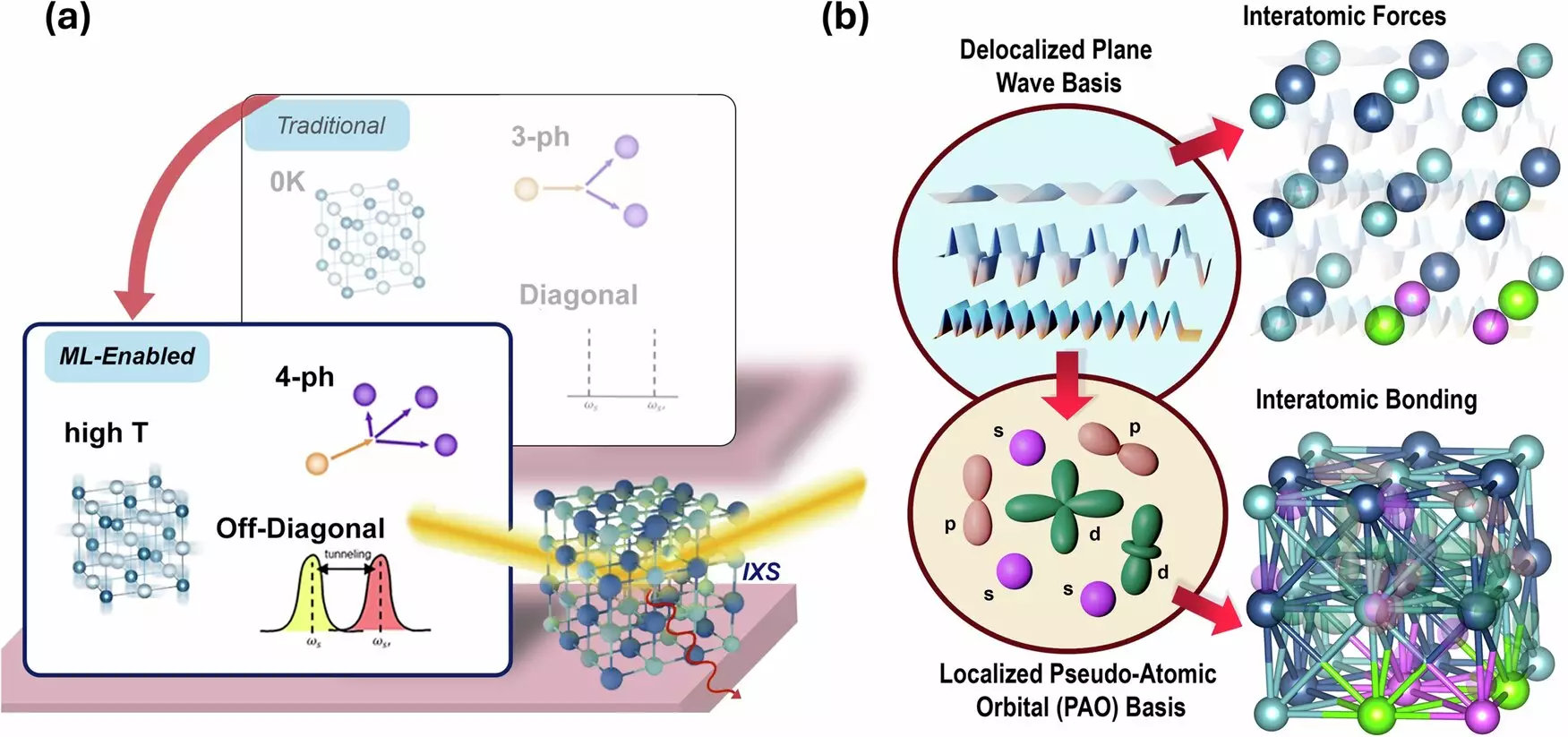Phase-change materials (PCMs) such as germanium telluride (GeTe) hold transformative potential in various sectors, particularly in thermoelectric energy conversion and advanced electronic applications. The unique characteristic of these materials is their ability to undergo structural transformations, leading to significant alterations in their thermal and electrical properties. Despite this promise, a longstanding enigma in the scientific community was how GeTe exhibited an unexpected increase in its lattice thermal conductivity upon heating. This peculiarity posed a challenge, as the mere observation of such behavior leaves a significant gap in understanding its underlying mechanisms.
Recent research led by Zhiting Tian, an associate professor at Cornell University’s Sibley School of Mechanical and Aerospace Engineering, has provided pivotal insights into this phenomenon. Collaborating with a team, Tian employed a combination of machine learning and X-ray scattering techniques to delve into the intricate behavior of GeTe as it transitions from a rhombohedral phase to a more stable cubic structure. By conducting first-principles calculations supported by empirical X-ray measurements, the researchers were able to construct a comprehensive model that elucidates the mysterious rising thermal conductivity associated with heating the material.
The research indicated that as the temperature increased from 693 K to 850 K, significant strengthening occurred in the bonds between second-nearest neighbors of Ge and Te atoms. The Ge-Ge bonds demonstrated an 8.3% increase in strength, whereas the Te-Te bonds exhibited a staggering 103% enhancement. Such findings mark a breakthrough in understanding how atomic interactions can significantly impact the macroscopic properties of materials.
One of the pivotal aspects of the research was the application of machine learning algorithms, which served to optimize the modeling of complex interactions within GeTe. Historically, investigating temperature effects and higher-order scattering interactions in materials has posed substantial computational challenges. However, Tian’s team successfully harnessed machine learning to streamline the extraction of critical interactions and to analyze multiple phenomena simultaneously. This not only includes temperature dependence but also extends to phenomena like four-phonon scattering and coherence contributions.
The ability to integrate these complex calculations signifies a notable advancement in material modeling techniques. It paves the way for a thorough understanding of how phase transitions affect material properties, marking a significant departure from previous methodologies that often struggled with the intricacies of thermal transport.
The implications of these discoveries extend beyond theoretical interest. The enhanced understanding of GeTe’s thermal conductivity holds crucial importance for its application in thermoelectric devices. In particular, GeTe has been positioned as a promising alternative to lead telluride, which suffers from inherent toxicity issues. With the ongoing demand for sustainable energy solutions, identifying environmentally friendly thermoelectric materials can significantly contribute to the development of cleaner energy technologies.
Moreover, by identifying other materials with similar properties, such as tin-telluride and tin-selenide, researchers can explore a broader spectrum of phase-change materials that could further enhance energy conversion technologies.
The innovative combination of machine learning and X-ray scattering techniques has enlightened researchers regarding the thermal conductivity behavior of germanium telluride. This research not only clarifies a perplexing phenomenon in thermal transport but also lays the groundwork for exploring other phase-change materials. As sustainability remains a pivotal focal point in energy research, findings from Tian’s team could stimulate significant advancements in non-toxic thermoelectric materials, broadening the horizons for energy efficiency and sustainable practices in technology. The quest to harness the full potential of phase-change materials continues, driven by the promise they hold for future applications in various fields of science and engineering.

